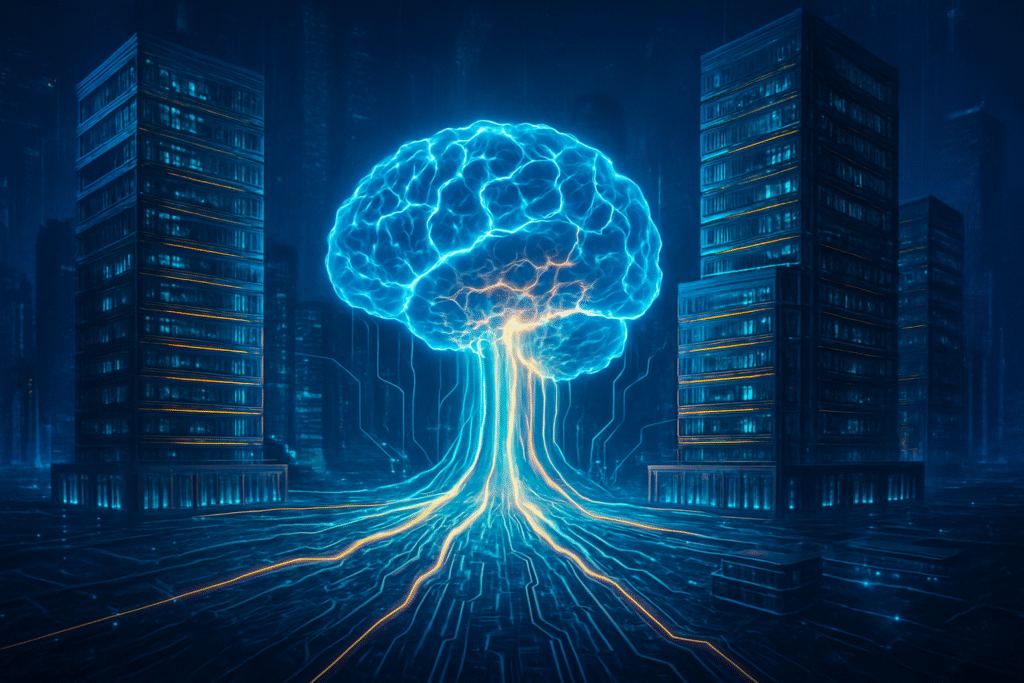
The burgeoning field of artificial intelligence, particularly the rapid advancement of generative AI and large language models, has developed an insatiable appetite for high-performance memory chips. This unprecedented demand is not merely a transient spike but a powerful force driving a projected decade-long "supercycle" in the memory chip market, fundamentally reshaping the semiconductor industry and its strategic priorities. As of October 2025, memory chips are no longer just components; they are critical enablers and, at times, strategic bottlenecks for the continued progression of AI.
This transformative period is characterized by surging prices, looming supply shortages, and a strategic pivot by manufacturers towards specialized, high-bandwidth memory (HBM) solutions. The ripple effects are profound, influencing everything from global supply chains and geopolitical dynamics to the very architecture of future computing systems and the competitive landscape for tech giants and innovative startups alike.
The Technical Core: HBM Leads a Memory Revolution
At the heart of AI's memory demands lies High-Bandwidth Memory (HBM), a specialized type of DRAM that has become indispensable for AI training and high-performance computing (HPC) platforms. HBM's superior speed, efficiency, and lower power consumption—compared to traditional DRAM—make it the preferred choice for feeding the colossal data requirements of modern AI accelerators. Current standards like HBM3 and HBM3E are in high demand, with HBM4 and HBM4E already on the horizon, promising even greater performance. Companies like SK Hynix (KRX: 000660), Samsung (KRX: 005930), and Micron (NASDAQ: MU) are the primary manufacturers, with Micron notably having nearly sold out its HBM output through 2026.
Beyond HBM, high-capacity enterprise Solid State Drives (SSDs) utilizing NAND Flash are crucial for storing the massive datasets that fuel AI models. Analysts predict that by 2026, one in five NAND bits will be dedicated to AI applications, contributing significantly to the market's value. This shift in focus towards high-value HBM is tightening capacity for traditional DRAM (DDR4, DDR5, LPDDR6), leading to widespread price hikes. For instance, Micron has reportedly suspended DRAM quotations and raised prices by 20-30% for various DDR types, with automotive DRAM seeing increases as high as 70%. The exponential growth of AI is accelerating the technical evolution of both DRAM and NAND Flash, as the industry races to overcome the "memory wall"—the performance gap between processors and traditional memory. Innovations are heavily concentrated on achieving higher bandwidth, greater capacity, and improved power efficiency to meet AI's relentless demands.
The scale of this demand is staggering. OpenAI's ambitious "Stargate" project, a multi-billion dollar initiative to build a vast network of AI data centers, alone projects a staggering demand equivalent to as many as 900,000 DRAM wafers per month by 2029. This figure represents up to 40% of the entire global DRAM output and more than double the current global HBM production capacity, underscoring the immense scale of AI's memory requirements and the pressure on manufacturers. Initial reactions from the AI research community and industry experts confirm that memory, particularly HBM, is now the critical bottleneck for scaling AI models further, driving intense R&D into new memory architectures and packaging technologies.
Reshaping the AI and Tech Industry Landscape
The AI-driven memory supercycle is profoundly impacting AI companies, tech giants, and startups, creating clear winners and intensifying competition.
Leading the charge in benefiting from this surge is Nvidia (NASDAQ: NVDA), whose AI GPUs form the backbone of AI superclusters. With its H100 and upcoming Blackwell GPUs considered essential for large-scale AI models, Nvidia's near-monopoly in AI training chips is further solidified by its active strategy of securing HBM supply through substantial prepayments to memory chipmakers. SK Hynix (KRX: 000660) has emerged as a dominant leader in HBM technology, reportedly holding approximately 70% of the global HBM market share in early 2025. The company is poised to overtake Samsung as the leading DRAM supplier by revenue in 2025, driven by HBM's explosive growth. SK Hynix has formalized strategic partnerships with OpenAI for HBM supply for the "Stargate" project and plans to double its HBM output in 2025. Samsung (KRX: 005930), despite past challenges with HBM, is aggressively investing in HBM4 development, aiming to catch up and maximize performance with customized HBMs. Samsung also formalized a strategic partnership with OpenAI for the "Stargate" project in early October 2025. Micron Technology (NASDAQ: MU) is another significant beneficiary, having sold out its HBM production capacity through 2025 and securing pricing agreements for most of its HBM3E supply for 2026. Micron is rapidly expanding its HBM capacity and has recently passed Nvidia's qualification tests for 12-Hi HBM3E. TSMC (NYSE: TSM), as the world's largest dedicated semiconductor foundry, also stands to gain significantly, manufacturing leading-edge chips for Nvidia and its competitors.
The competitive landscape is intensifying, with HBM dominance becoming a key battleground. SK Hynix and Samsung collectively control an estimated 80% of the HBM market, giving them significant leverage. The technology race is focused on next-generation HBM, such as HBM4, with companies aggressively pushing for higher bandwidth and power efficiency. Supply chain bottlenecks, particularly HBM shortages and the limited capacity for advanced packaging like TSMC's CoWoS technology, remain critical challenges. For AI startups, access to cutting-edge memory can be a significant hurdle due to high demand and pre-orders by larger players, making strategic partnerships with memory providers or cloud giants increasingly vital. The market positioning sees HBM as the primary growth driver, with the HBM market projected to nearly double in revenue in 2025 to approximately $34 billion and continue growing by 30% annually until 2030. Hyperscalers like Microsoft (NASDAQ: MSFT), Alphabet (NASDAQ: GOOGL), Amazon (NASDAQ: AMZN), and Meta (NASDAQ: META) are investing hundreds of billions in AI infrastructure, driving unprecedented demand and increasingly buying directly from memory manufacturers with multi-year contracts.
Wider Significance and Broader Implications
AI's insatiable memory demand in October 2025 is a defining trend, highlighting memory bandwidth and capacity as critical limiting factors for AI advancement, even beyond raw GPU power. This has spurred an intense focus on advanced memory technologies like HBM and emerging solutions such as Compute Express Link (CXL), which addresses memory disaggregation and latency. Anticipated breakthroughs for 2025 include AI models with "near-infinite memory capacity" and vastly expanded context windows, crucial for "agentic AI" systems that require long-term reasoning and continuity in interactions. The expansion of AI into edge devices like AI-enhanced PCs and smartphones is also creating new demand channels for optimized memory.
The economic impact is profound. The AI memory chip market is in a "supercycle," projected to grow from USD 110 billion in 2024 to USD 1,248.8 billion by 2034, with HBM shipments alone expected to grow by 70% year-over-year in 2025. This has led to substantial price hikes for DRAM and NAND. Supply chain stress is evident, with major AI players forging strategic partnerships to secure massive HBM supplies for projects like OpenAI's "Stargate." Geopolitical tensions and export restrictions continue to impact supply chains, driving regionalization and potentially creating a "two-speed" industry. The scale of AI infrastructure buildouts necessitates unprecedented capital expenditure in manufacturing facilities and drives innovation in packaging and data center design.
However, this rapid advancement comes with significant concerns. AI data centers are extraordinarily power-hungry, contributing to a projected doubling of electricity demand by 2030, raising alarms about an "energy crisis." Beyond energy, the environmental impact is substantial, with data centers requiring vast amounts of water for cooling and the production of high-performance hardware accelerating electronic waste. The "memory wall"—the performance gap between processors and memory—remains a critical bottleneck. Market instability due to the cyclical nature of memory manufacturing combined with explosive AI demand creates volatility, and the shift towards high-margin AI products can constrain supplies of other memory types. Comparing this to previous AI milestones, the current "supercycle" is unique because memory itself has become the central bottleneck and strategic enabler, necessitating fundamental architectural changes in memory systems rather than just more powerful processors. The challenges extend to system-level concerns like power, cooling, and the physical footprint of data centers, which were less pronounced in earlier AI eras.
The Horizon: Future Developments and Challenges
Looking ahead from October 2025, the AI memory chip market is poised for continued, transformative growth. The overall market is projected to reach $3079 million in 2025, with a remarkable CAGR of 63.5% from 2025 to 2033 for AI-specific memory. HBM is expected to remain foundational, with the HBM market growing 30% annually through 2030 and next-generation HBM4, featuring customer-specific logic dies, becoming a flagship product from 2026 onwards. Traditional DRAM and NAND will also see sustained growth, driven by AI server deployments and the adoption of QLC flash. Emerging memory technologies like MRAM, ReRAM, and PCM are being explored for storage-class memory applications, with the market for these technologies projected to grow 2.2 times its current size by 2035. Memory-optimized AI architectures, CXL technology, and even photonics are expected to play crucial roles in addressing future memory challenges.
Potential applications on the horizon are vast, spanning from further advancements in generative AI and machine learning to the expansion of AI into edge devices like AI-enhanced PCs and smartphones, which will drive substantial memory demand from 2026. Agentic AI systems, requiring memory capable of sustaining long dialogues and adapting to evolving contexts, will necessitate explicit memory modules and vector databases. Industries like healthcare and automotive will increasingly rely on these advanced memory chips for complex algorithms and vast datasets.
However, significant challenges persist. The "memory wall" continues to be a major hurdle, causing processors to stall and limiting AI performance. Power consumption of DRAM, which can account for up to 30% or more of total data center power usage, demands improved energy efficiency. Latency, scalability, and manufacturability of new memory technologies at cost-effective scales are also critical challenges. Supply chain constraints, rapid AI evolution versus slower memory development cycles, and complex memory management for AI models (e.g., "memory decay & forgetting" and data governance) all need to be addressed. Experts predict sustained and transformative market growth, with inference workloads surpassing training by 2025, making memory a strategic enabler. Increased customization of HBM products, intensified competition, and hardware-level innovations beyond HBM are also expected, with a blurring of compute and memory boundaries and an intense focus on energy efficiency across the AI hardware stack.
A New Era of AI Computing
In summary, AI's voracious demand for memory chips has ushered in a profound and likely decade-long "supercycle" that is fundamentally re-architecting the semiconductor industry. High-Bandwidth Memory (HBM) has emerged as the linchpin, driving unprecedented investment, innovation, and strategic partnerships among tech giants, memory manufacturers, and AI labs. The implications are far-reaching, from reshaping global supply chains and intensifying geopolitical competition to accelerating the development of energy-efficient computing and novel memory architectures.
This development marks a significant milestone in AI history, shifting the primary bottleneck from raw processing power to the ability to efficiently store and access vast amounts of data. The industry is witnessing a paradigm shift where memory is no longer a passive component but an active, strategic element dictating the pace and scale of AI advancement. As we move forward, watch for continued innovation in HBM and emerging memory technologies, strategic alliances between AI developers and chipmakers, and increasing efforts to address the energy and environmental footprint of AI. The coming weeks and months will undoubtedly bring further announcements regarding capacity expansions, new product developments, and evolving market dynamics as the AI memory supercycle continues its transformative journey.
This content is intended for informational purposes only and represents analysis of current AI developments.
TokenRing AI delivers enterprise-grade solutions for multi-agent AI workflow orchestration, AI-powered development tools, and seamless remote collaboration platforms. For more information, visit https://www.tokenring.ai/.




